
Once in every so often you get back from a crag that has something of a sparkle to it, something that makes it stand out. It could be the climbing, but infrequently is it the climbing alone that creates the kind of magic that really makes a place memorable - you need something more, something special. The Burren, located on Ireland's wild Atlantic coast is an area brimming with that something; not only is there world-class climbing, but there's a beautiful weather worn limestone landscape, coupled with an untamed sea, that creates something of an atmosphere.
Before I begin, it's worth explaining exactly what the Burren is - it's not a crag, it's an area. This article focuses on a particular crag within that area, a crag that is arguably Ireland's finest: Ailladie. Whilst Ailladie could be considered to be reminiscent of Pembroke, insofar as it's limestone and it's by the sea, they climb very, very differently; in fact, I personally have never climbed on limestone quite like it, as if anything it has a climbing style more akin to granite, with many of the lines taking soaring cracks. Protection is also plentiful, ordinarily taking form of good wires (of all sizes) due to the featured nature of the cracks. Cams are something to be judged on a case-by-case basis, as the friction can vary from amazing to awful depending on the way the rock has weathered - as such use your own judgment when placing them…and falling on them… Another difference is the climbing at Ailladie isn't overly extensive, but what it lacks in quantity it makes up for in quality. Add into the mix a short approach, close proximity to the camping, and you've got yourself a small but perfectly formed slice of perfection.
Due to its location on Ireland's west coast, Ailladie receives the full brunt of the Atlantic, not to mention all the weather systems going. As such, when it's bad it's really bad, but when it's good it is something truly special (not least for the sunsets). Before planning a trip it is definitely worth checking the tides and - perhaps even more importantly - the swell, as when the ocean is charging it doesn't matter whether you're on a non-tidal platform or at the top of the crag - that spray is going to get you! Wind is another factor to contend with, as strong westerlies can also result in spray being blown onto the walls, but equally a gentle breeze can dry out the crag, which on the whole is quite fast, apart from after repeated days of rain when dampness can linger in the back of the cracks. One final note for those who do strike lucky, the cliffs can - in certain special circumstances - get quite hot when the sun is out, with the vertical walls acting as something of an oven. Whilst all of the above reads as a long list of caveats and reasons not to go, it's much like climbing everywhere else in the British Isles - check the weather, avoid the extremes, and cross your fingers
In terms of grades, there are routes all the way through from Hard Severe - E7; however, as with any crag there's definitely a 'best' grade to be climbing and at Ailladie that would have to be somewhere between the E2-5 mark. Between these the classics are plentiful and of a rare pedigree. Having written articles to both the Top 5 E3s and the Top 5 E5s in the British Isles, I must admit to having felt a tinge of regret at not having written them after I'd been here (or Fair Head for that matter) as there is quality to match any of the routes within either of those two lists. The one thing I would say about the grades is that irrespective of what grade you climb, the chances are is that they will feel quite hard for their respective number to begin with. Persevere with the style and they soon begin to feel quite reasonable, not least because the protection tends to be so good.
History
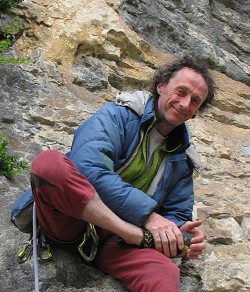
Partnered with Tom Ryan, Keefe put up what are undoubtely some of the finest lines on the crag including Skywalker, Kleptomaniac, Midnight Summer Dream, Lucy, Virtual Image, The Siren, Blockhead, and Wall of Fossils (just to name a few). What's all the more inspiring is that I've known him for many years now and never realised the true extent of his achievements, such is his quiet and understated nature.
I would say 'Keefe still climbs', but that would be something of an understatement (so maybe quite appropriate), as when I last saw him he was trying Unjustified - an 8b+ at Malham Cove.
Here's what he had to say:
I was lucky with Ailladie in many ways. I learned of it while studying in Dublin and it took me a little while to realise that it was only 60km from the family home. This made for an arduous cycle – but it was well worthwhile during the summer weekends. My first few visits were with the university mountaineering club and we were all in awe of the steeper walls and the people who dared to climb on them. An ascent of The Ramp was something to be dreamed of. I climbed it later that year as I started to develop as a climber on the crag.
I was lucky to arrive at AIlladie after the initial exploration had been done – so we knew of it – but while there was still a vast amount of potential at what became my grade.
And I was lucky to meet and team up with Tom Ryan whose enthusiasm for climbing and cliffs knew no bounds. We shared a rope extensively at Ailladie and Fair Head, as well as further afield – including some visits to the crag during winter storms – just to watch waves breaking over the walls. I was home for the summers and he was finishing academic work in marine biology in the west of County Galway – so it was easy to make a permanent arrangement to meet for weekends. We had the place to ourselves a lot of the time – it was a long way from Dublin and other climbers had their attention on Fair Head. Having other people visit the crag was always a treat – and we seldom had competition for the routes.
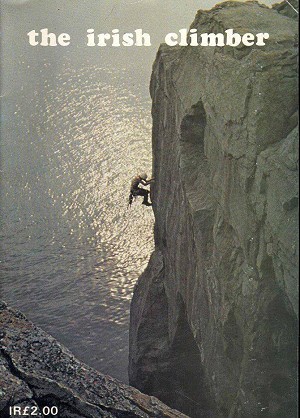
Whenever I came back to the crag after some time away it was always fun to see how routes had changed during the winter storms. Huge boulders are routinely tipped over and moved around. One year I came back and found the difficult start of Blockhead was filled in with a few feet of pebbles, missing out the hardest climbing. When I came back to repeat The Cutter and found that the only start is from an ab rope – I have no idea what was different – I just know I climbed it on my previous attempt and could not climb it this time. It feels disappointing to see that some of the routes on Mirror Wall now start by abbing in to a ledge a couple of meters up – it was a great part of the adventure to walk in with a rising tide to start the routes. Another time I came back and found that the huge capping roof of The Keep had disappeared, leaving an amenable open airy corner rather than the foreboding roofed chimney that had attracted me to the line in the first place. The sea there is awesome - there's a reason that the rock that remains is solid.
It always remains a special place for me – with many good memories – camping on top of the crag opposite where all the tour buses pull in nowadays – many beautiful sunsets – fresh mackerel from the fishermen who had surplus – and the climbing – always an adventure.
Areas
The Dancing Ledges
The Dancing Ledges are arguably the most convenient area at Ailladie, insofar as they can be approached on foot and have non-tidal access. Not only that, but it also features the easiest and shortest climbing in the area, thus making it more accessible to those not wishing to embrace the more hardcore areas further on, with starred routes from Hard Severe to E2.
Being that these are some of the more popular routes here, they are also some of the most polished - be warned.
HS: Genesis (HS 4b), Lisdoonfarout (HS 4a) VS: Ground Control (VS 4c), Bonnain Bui (VS 4c) HVS: Nutrocker (HVS 5a)
Aran Wall
The Aran Wall is the first of the jaw-dropping sectors, with classic line after classic line. Like the Dancing Ledges it is non-tidal and quite a distance from the sea, so the conditions here are much more reliable than the neighboring Mirror Wall; although that said, the boulders at the base of Gallows Pole are still subject to movement after winter storms - something worth bearing in mind whilst you're standing beneath the route!
Height-wise Aran Wall is a notch up from the Dancing Ledges, with most routes being in/around the 30m mark. Grade-wise Aran Wall is particularly good at E2-3, with a trio of classics at each grade. If you're thinking of doing a few routes in this area and don't fancy the five minute walk down and around you can always set up an abseil - this could make for a productive day.
E2: Gallows Pole (E2 5c), Lucy (E2 5c), Skywalker (E2 5c) E3: Midnight Summer Dream (E3 5c), Sunstone (E3 6a), Kleptomaniac (E3 6a)
Mirror Wall
The Mirror Wall is undoubtedly the show-stopper and must rate as one of the finest and purest walls in the British Isles. However, all good things come at a price, and the price of the Mirror Wall is that it's a tricky place to get in good condition. The reason for this is due to its close proximity to the (highly volatile) sea. Swell aside, its tidal nature means that irrespective of the state of the sea most of the routes would be somewhat ambitious to climb at high tide (in all but the calmest of conditions).

To make matters that bit more complex, the huge boulders at the base of the crag frequently move; however, as a rule of thumb 90% of the routes on Mirror Wall begin with a hanging stance and not from the base of the crag, which is extremely crozzly, undercut, and frequently protectionless (this is something that isn't quite clear within the guide). Whilst low tide is important simply so the sea is that bit further away, it isn't essential in good conditions as it's unlikely you'll be approaching the routes by foot; in fact, the only routes we climbed that were possible to climb from the very bottom were The Ramp, On Reflection, and Through the Looking Glass, then the routes on the subsidiary wall further right which includes Damn the Torpedos, Sharkbait and Pis Fliuch . With the other routes on the wall your best option is to setup a direct abseil into each, with a friend standing on the promontory opposite directing you where to go. Unfortunately many of the lines are actually quite unobvious until you're actually next to them, so take some rope protectors and a set of jumars so you can get back out if you are on the wrong line. A bag/bucket for your ropes will also help you avoid you having to uncoil them at the base of the routes, not to mention minimise the risk of them getting wet.
As a result of the Mirror Wall's purity, it is perhaps quite unsurprising that the standard of the routes heading up it is exceptionally high - both in terms of quality and difficulty. The easiest line up it is The Ramp, which takes the convenient and curving feature up the right hand side of the wall, taking you through terrain that would otherwise only be accessed via E5 climbing; however, The Ramp isn't really in keeping with the style of the rest of the routes on the wall, which all take direct and uncompromising lines up striking crack lines. The cream of the crop come in at E3-5, with a number of routes that rank as the finest anywhere in the British Isles.
HVS: Pis Fliuch (HVS 5a) E1: The Ramp (E1 5b) E3: Virtual image (E4 6a), Through the Looking Glass (E3 5c) E4: The Cutter (E4 6a) E5: Flaws In The Glass (E5 6a), Refraction (E5 6a), Quicksilver (E5 6a)
Stone Wall
The Stone Wall could be considered a continuation of the Mirror Wall in more ways than one, but (thankfully) has a few easier options in a wild position. Being accessible only via abseil, you definitely get the feeling of being out there irrespective of what grade you're climbing! It is home to what could be the area's finest VS - Jug City - which feels a long, long way from the more accessible VSs over at the Dancing Ledges. Beyond this there is a trio of good E2s, a highly photogenic E3, and a couple of E5s that are worth investigating.
VS: Jug city (VS 4c) E2: Garbh (E2 5b), Western Pride (E2 5c), The Emigrant (E2 5c) E3: Siren (E3 5c) E5: The Rack (E5 6a), Heart Full Of Arrows (E5 6a)
An Falla Uaigneach (The Lonely Wall)
The Lonely Wall is a smaller, inset section of the cliff, which again offers adventurous climbing, requiring abseil access and hanging belays to gain all of the routes. Sea Bird will no doubt be of interest to E1 leaders looking for an adventurous time, taking an unlikely line up through wild overlaps, right above the sea.
Boulder Wall
The final area is once-again tidal (you're probably noticing a pattern by now), requiring - as per the last few areas - abseil approach and (in most cases) a hanging stance. It's all worth it though, as the area offers two of the best HVSs around, another 3 star E1, and a couple of rather exciting looking E7s…
HVS: Great Balls of Fire (HVS 5a), Black Magic (HVS 5a) E1: Doolin Rouge (E1 5a) E7: The Littlest Hobo, The Power of the Hobo (E7 6c)
Deep Water Soloing
First and foremost, it needs to be stressed that Deep Water Soloing at Ailladie is at the more committing end of the spectrum, being both high, hard, and frequently difficult to escape. As such, it's not just the sort of place you'd decide to don the shorts, strap on the chalk bag, and go for glory; it's a place that requires careful planning with tides, swell, and establishing your escape routes should you fall in (leaving a ladder or knotted rope is standard). Should all these criteria be fulfilled here's a few of the classics, plus a video of Colm Shannon and friends doing some of them - the latter will either inspire you to do them or intimidate you enough to keep those wires close to hand!!
For more information take a look at the following UKC article/interview with Colm Shannon back in August 2016.

7b: The Crozzly Show (7b), The Vein (7b) 7b+: King Grozzle, The Power of the Hobo (E7 6c) 7c: The Crozzle Monster, The Adventures of the Wonderwagon 8a: The Jelly Situation
Ballyryan
Whilst this isn't necessarily what you've come to Ailladie for, Ballyryan offers convenience cragging just beside the road and would be an ideal spot for beginners, or for those wishing to take their first forays onto Burren rock in a less committing environment.
No match for crag id:$crag_name
Logistics
When to Go
Spring through to autumn are your best bet. In the summer sunshine it can actually get too hot, as the vertical limestone walls catch all the sun going, creating something of an oven (not to mention sub-optimal climbing conditions on some of those small holds!). As suggested within the article above, it's worth taking tides + swell into account; aiming for a midday or early afternoon low would be perfect, that way you've got all options available if the swell plays ball.
How to Get There
There's two schools of thought here: go fast and light with a flight or slow and heavy with a ferry. Both have their merits: the former is probably better suited towards a shorter trip, particularly if you get a flight to Shannon, which is only an hour away from the Burren. That said, this does mean you have to hire a car, which isn't overly cheap.
Personally though I've always opted for the latter, as it's allowed me to take most of what I need with me (a large rack, ropes, ab line, tent, and camping stuff tend to blow out your cheap flight baggage allowance too) and have the flexibility once I'm over there. The Holyhead to Dublin ferry isn't the cheapest, but it does mean you save on all those other hidden costs of flying (airport parking, car hire, extra baggage etc…), plus you get the added bonus of seeing Gogarth from the sea…
Accommodation Advertise here
No Premier Listings found in this area
There are a few options here depending on the levels of sophistication you're after. There is camping 500m on from the top of the cliff, which seems pretty standard amongst visitors and locals alike, however the utmost respect should be given to the landscape so make sure you clean up all your litter (and don't go shitting on the limestone pavement)! The local farmer doesn't like people camping right on top of the cliff/opposite the parking, so please refrain from doing that in order to maintain good relations. Going upmarket one notch there's campsites in nearby Fanore (home to a stunning beach) and Doolin (home to some stunning pubs). Up one notch further and Doolin is where its at, with a number of B&Bs + Hostels. AirBnB is also worth checking, as there seems to be a vast selection available on there of varying sizes.
Guidebook
You've got a couple of options: if traveling in/around Ireland then Dave Flannagan's Rock Climbing in Ireland select guide is worth considering, but if you've got a more extended stay planned then the guide to get is undoubtedly the definitive Climbs in the Burren and Aran Islands guide.
Food and Supplies
Galway is probably your nearest bet for a big shop, being home to a Lidl, Tesco, and Aldi. For more ad hoc top-ups the Spar in Lisdoonvarna would cater for most of your needs.
Outdoor Shops Advertise here
No Premier Listings found in this area
Gear-wise there is a climbing/outdoor shop in Galway called The Great Outdoors which should cater for most of your needs from gear to gas, chalk to camping chairs; as such, if you've forgotten anything it's not the end of the world.
Other Activities
On the one side of the rock quality coin comes the cliffs of Ailladie, on the other come the cliffs of Moher, which are located just south of Doolin. Whilst you can drive up to them, there's a nice walk going from town that comes in at around 12k - a good rest day activity…if you find that sort of thing restful…
The Burren is a hotbed of activity when it comes to wildlife, so its worth taking your binoculars just in case a pod of dolphins crops up. In addition to that you're likely to see a lot of birds and butterflies, orchids and plants, not to mention more limestone pavement than you could shake a stick at.
The area is also blessed with a lot of good pubs, which are good both for drinking and for listening to live/local music. Doolin has a vast selection, the best of which were McDermott's Bar (which also does good food) and McGann's (which also does good food), plus they have seating outside if the weather is nice. The Roadside Tavern in Lisdoonvarna also have a nice vibe, with more live music, and - most important of all - its the home of the Burren Brewery. Their stout 'The Burren Black' was particularly fine, better than Guinness supposed (controversial though that might be…)
- DESTINATION GUIDE: The Finest E3s in Pembroke 18 Aug
- PHOTOGRAPHY: UKC Photography Awards - 2024 Category Finalists 18 Aug
- DESTINATION GUIDE: The Finest E2s in Pembroke 13 Aug
- DESTINATION GUIDE: The Finest E1s in Pembroke 4 Aug
- REVIEW: Edelrid Ohmega - An Absolute Game Changer 25 Jul
- REVIEW: Boreal Mutant 3.0 22 Jul
- REVIEW: Unparallel Float - support with sensitivity 27 Jun
- REVIEW: Jetboil Genesis Stove System - The Ultimate Two Ring Burner? 3 Jun
- INTERVIEW: Esther Foster and Callum Coldwell Storry on the Langdale Extreme Rock Challenge 27 May
- REVIEW: Patagonia Nano Air Ultralight - Men's and Women's 23 May

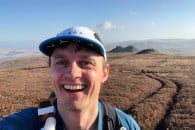





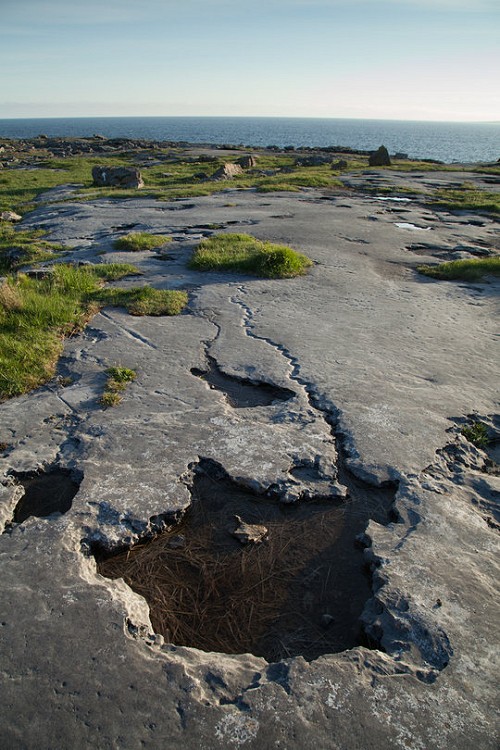
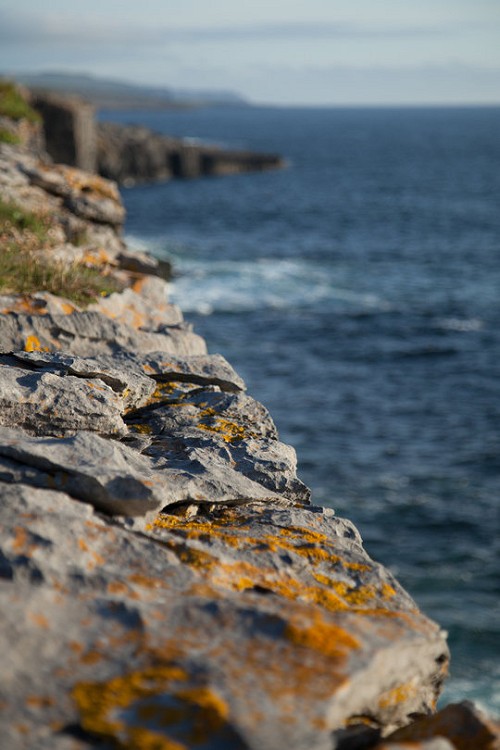
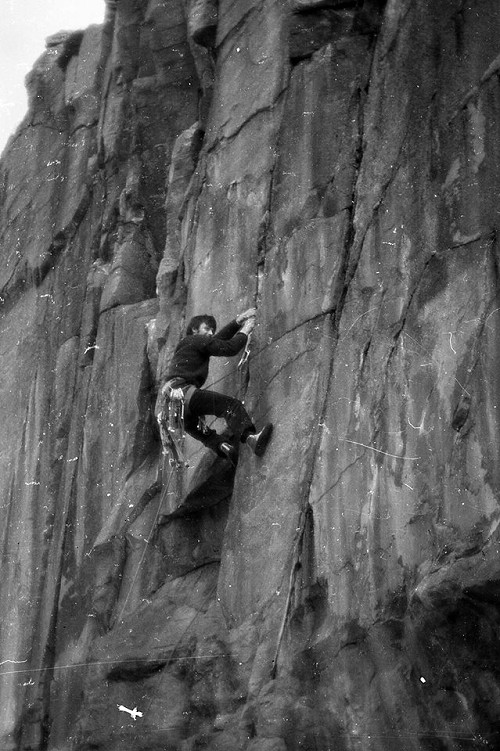




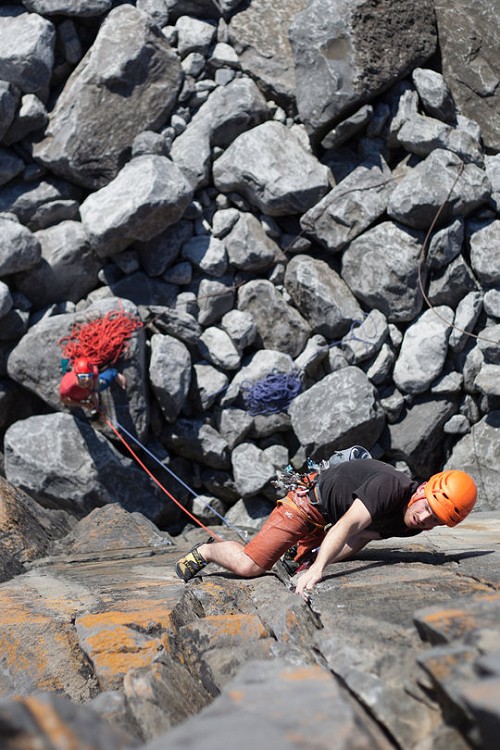
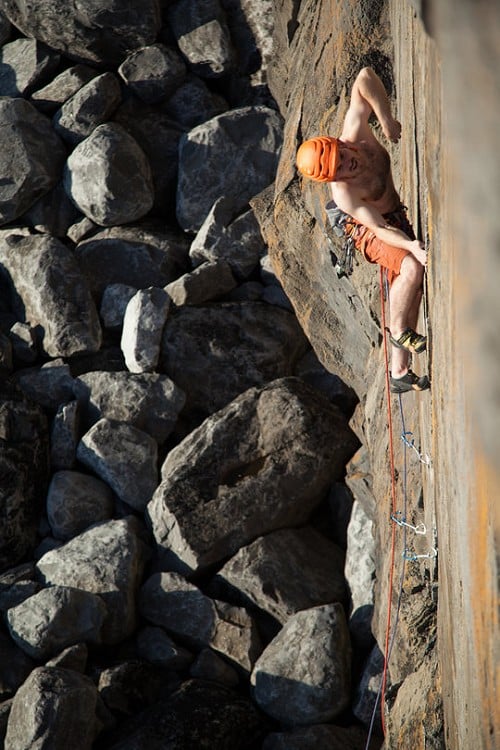
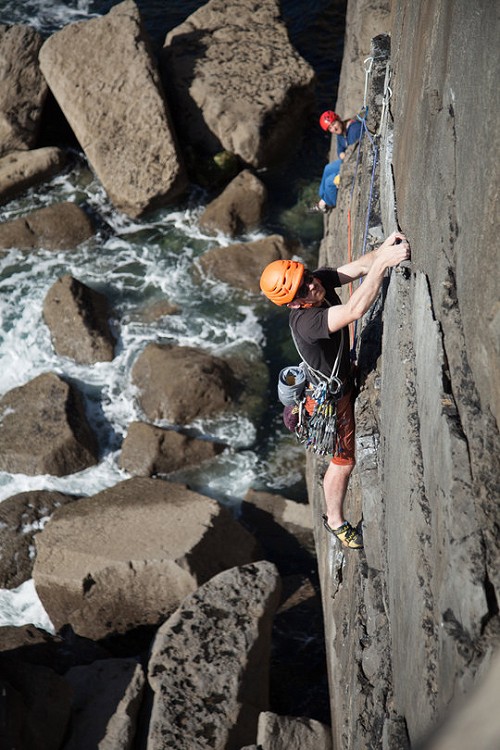
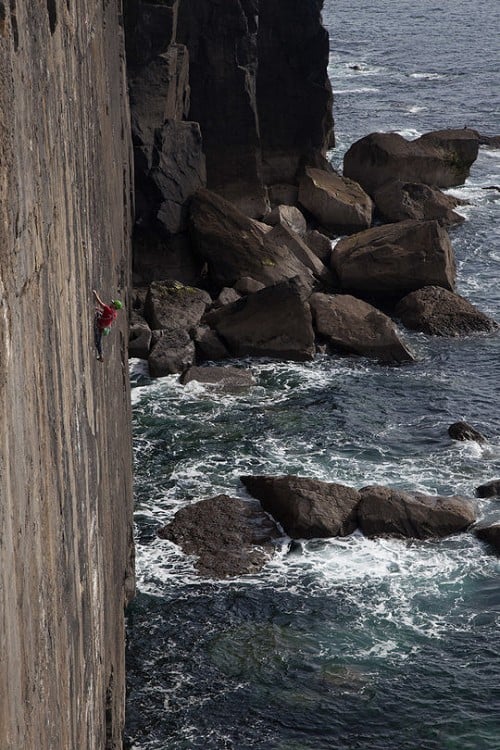
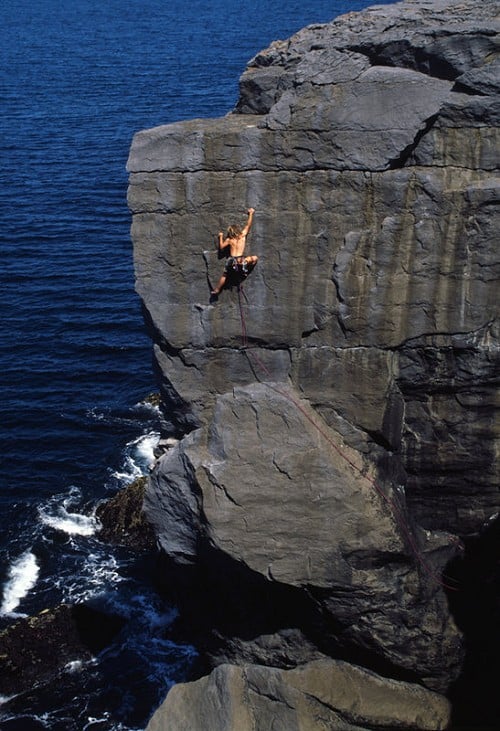

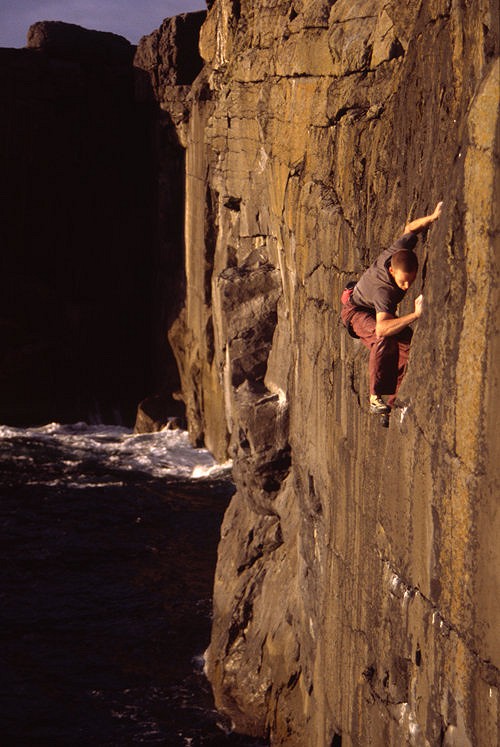

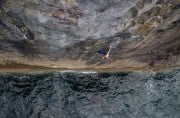



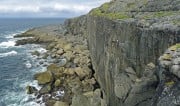

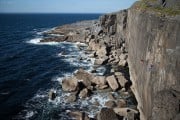



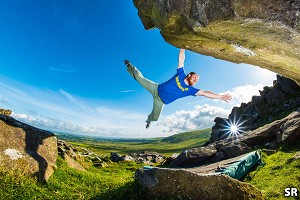
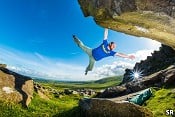
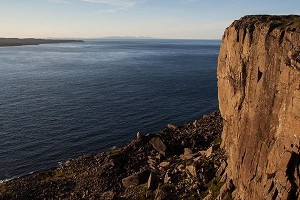
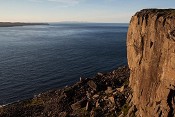



Comments